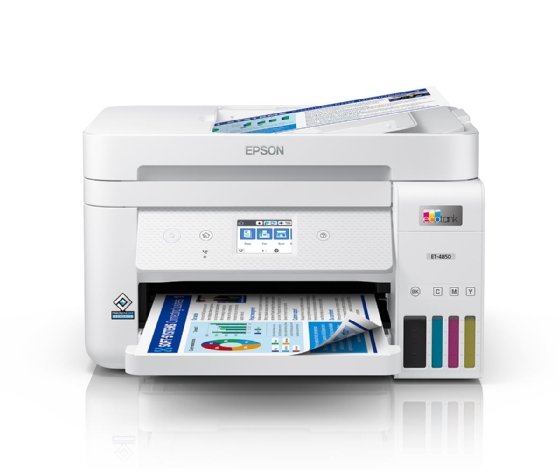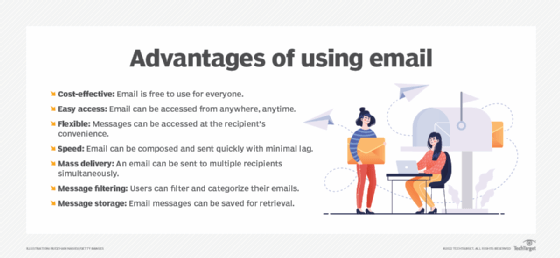fax
What is a fax?
A fax -- short for facsimile and sometimes called telecopying -- is the telephonic transmission of scanned-in printed material, including text or images. Faxes are usually sent to a telephone number associated with a printer, fax machine or other output device. Today, computer-based fax technology is completely digital without the use of paper printouts.
Faxes are often used when documents must be sent fast and securely. Facsimile machines scan a document and transmit it over a telephone line or the internet. The document can travel long distances in minutes, saving time and money compared to other methods of document transmission. Fax transmissions are also secure, as each document is given its own unique code which ensures that only authorized individuals have access to the contents.
Fax machines have become increasingly popular in recent years due to their ease of use and ability to send multiple documents at once. This makes them ideal for businesses that distribute large volumes of documents quickly and securely, such as legal and financial firms. Fax applications are available to send and receive faxes using computers and smartphones.

How faxes work
Fax machines scan a document, treating the text and images as a single fixed graphic image and converting it into a bitmap. In this digital form, the information is transmitted as electrical signals through the public switched telephone network (PSTN), using a standard analog telephone line. The digitized document can also be sent over the internet. The receiving fax machine converts the coded image and provides a digital version of the document from which a paper copy can be printed if desired.
Most modems manufactured today can send and receive fax data. Fax modem software generates fax signals directly from disk files or the screen. Even if a document is only text, the computer treats it as a scanned image and transmits it to the receiver as a bitmap.
Faxing a message online works well if the recipient only wants to read the message. However, if the document requires editing, it must be converted into ASCII text by an optical character recognition program or retyped manually into the computer.
Email is a more efficient method of sending documents that require modification. Email files are already ASCII text so they can be edited in a text editor or word processing program.

Several free and commercial providers offer arrangements for using the internet rather than the public telephone system for most or part of the path to the fax point. Some online fax services also provide the ability to broadcast a fax to multiple addresses.
Benefits of fax technology
The ability to send important documents digitally has revolutionized how businesses operate, eliminating the need for physical copies of important paperwork that can be lost or damaged. The following are some of the benefits of using faxes:
Low cost. The cost of sending a fax is nominal, especially when the internet is used as the transmission medium.
Secure. Encryption helps ensure that faxed documents aren't damaged or stolen during transmission. Using the PSTN reduces the likelihood of a security breach because connections are point to point over a fixed connection. Faxes are widely used in industries with high security requirements, such as the protected health information used in healthcare.
Reduces carbon footprint. By using digital transmissions instead of paper copies, companies reduce their carbon footprint while still enabling effective communication with clients and colleagues across the globe.
Document tracking. Faxing provides instant confirmation when documents are sent and received, letting users easily track them. This ensures sensitive information is delivered safely and securely, something that can't be guaranteed with other methods such as email or physical mail and delivery services.
The history of fax systems
Scottish engineer Alexander Bain invented the electric printing telegraph in 1843. This early facsimile technology could send images and text from one device to another using electrical signals. By the late 1800s, a more efficient version of this telecommunication technology had been developed, letting documents be transmitted over telephone lines. In 1924, RCA invented the Radiophoto, which used radio waves to transmit pictures and documents rather than relying on telephone lines.
Early fax technology required a relatively manual process, including the following steps:
- The transmitting operator inserted the document to be transmitted into a slot that secured it to the fax machine's drum.
- A phone line was used for dialing the fax number for the receiving device that had special thermal fax paper attached to the drum of the receiving machine.
- The sender and receiver made voice contact over the phone.
- The phone handsets were then inserted into couplers that could transmit and receive fax signals.
- The transmitting operator pressed a start button that initiated the transmitting device.
- Upon hearing the receiving device's signal, the transmitting machine's revolving drum started to spin, and a stylus moved slowly across the drum creating signals whenever it detected a difference in the image being scanned.
- The receiving device's drum also began spinning, and its stylus moved across the drum in concert with the transmitting device. The stylus generated an electrical signal that burned an image on the thermal paper on the receiving device.
- Once the document image was transmitted, the operators verbally confirmed via phone that the incoming fax was received.
Only one page could be sent at a time with early fax machines. The process had to be repeated for subsequent pages of a document.
In 1966, Xerox revolutionized fax technology with its Magnafax Telecopier, the first commercially viable fax machine. It was smaller, lighter and more affordable than previous systems and produced higher quality prints.
Next-generation fax systems used digital technology and other enhancements to improve the flexibility of the technology and eliminate the need for special paper. The ability to scan multiple documents in a single transmission without the need for voice confirmation was an advancement that saved time and increased productivity.
Today's machines use laser technology for both fax and copier engines. They also use the internet for parts of the transmission path, as well as traditional telephone lines. Many modern fax machines are designed with energy-saving features such as automatic shutoff when not in use and LED lights that indicate when power is being used efficiently.
Learn how one healthcare provider is making the switch away from faxing.







